It’s our sincere hope that each of you, our readers, will completely enjoy and appreciate this article about these 5 Intriguing Insects of India. We certainly enjoyed pulling the data together for you. May it provide you all with both education and increased awareness.
Naturally, though, these few species represent only the tiniest part of the abundance of wildlife in this amazing region. Indeed, this part of the world’s land teems with life. To learn of some of the other wonders present here, check out some of our other articles.
Red Pierrot
Red Pierrot Facts
- Leading off this article about these 5 Intriguing Insects of India comes the fluttering beauty known simply as the Red Pierrot.
- The perfectly descriptive term given to it serves as the accepted common name for a beautiful variety of Lepidoptera. This small marvel of Nature, like many species, remains better known to researchers by its scientific name, however.
- That term, remains that of the somewhat hard to pronounce Talicada nyseus. Regardless of which of these names you use to refer to it, though, this particular species of butterfly has one of the most striking color patterns of any of its kind.
- The first official recognition of this creature as a separate and distinct species occurred in the year 1843. The formal credit for this fortuitous identification goes to the well known and renowned French entomologist, Félix Édouard Guérin – Méneville.
- It also forms a member of the Lycaenidae family, the second-largest of all Families of butterflies, with more than 6,000 member species. Quite fortunately, the gorgeous invertebrate known as the Red Pierrot, has an advantage over many related species.
- This magnificent insect appears to be maintaining a sufficient and stable population throughout the entirety of its natural range. The IUCN therefore currently has no listing for this invertebrate on the organization’s Red List of Threatened Species.
- This wonder of evolution must nevertheless be considered to be at some risk, at least. This regrettable situation primarily occurs due to a combination of two different threats. Sadly, either one of these would be enough to place it in peril.
- Firstly, the truly beautiful insect currently faces the problem posed by increasing habitat loss. Secondly, though, the greatest threat to its continued existence most likely comes in the form of ongoing climate change, like many creatures.
Red Pierrot Physical Description
Perhaps most notably, although the Red Pierrot ranks high among its kindred in terms of beauty, it does not do so in terms of sheer physical size. In point of fact, this particular species of Lepidoptera ranks as a smaller than average type of butterfly.
However, this sincerely lovely arthropod does have one trait in common with its kindred, of all sizes. That holds true due to the fact that this specific invertebrate displays a slight degree of the physiological characteristic of sexual dimorphism.
In this instance, though, that physical trait manifests itself in terms of overall physical size. That holds true because of the fact that the females of this specific butterfly generally attain a slightly greater physical size than that of the males of the species.
Overall, adults attain an average wingspan of 1.2 – 1.4 in (3 – 3.5 cm). In other respects, the genders remain indistinguishable from each other. The upper section of the wing appears black, with the exception of a prominent orange section of the hindwing, on the lower edge.
In the meantime, the underside of the wings of the stunning Red Pierrot is something entirely different. That’s partly because the forewing show white, with black spots. This makes for a truly striking appearance for this insect to show the world.
Meanwhile, though, the hindwing of the butterfly has the same basic pattern of black spots. But a difference also occurs. These black spots also appear along with a wide band of orange. Finally, multiple white spots also appear quite prominently.
- Kingdom: Animalia
- Phylum: Arthropoda
- Class: Insecta
- Order: Lepidoptera
- Family: Lycaenidae
- Genus: Talicada
- Species: T. nyseus
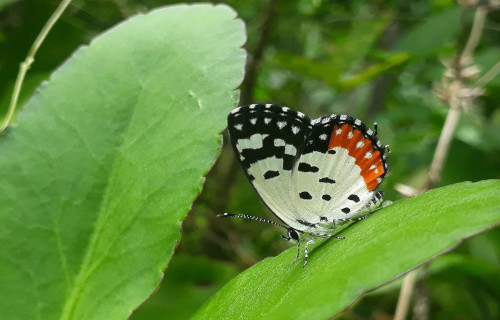
Red Pierrot Distribution, Habitat, and Ecology
The Red Pierrot inhabits a moderate-sized portion of the world, for a butterfly. That’s because of the fact that it appears in a wide swathe of Asia. More precisely, this truly magnificent arthropod inhabits an area includes the great majority of the country of India.
But, the visually marvelous little creature also appears in the foothills of the Himalayas, as well as the northern section of the country of Myanmar. Within this extensive range, however, the animal continues to be quite flexible in its choice of habitat.
That statement rings true given the fact that it appears in widely varied regions. In point of fact, this stunning arthropod lives in such varied regions as areas of degraded evergreen forests, semi-arid plains, mountains, and even private gardens.
The quite beautiful Red Pierrot inhabits any and all of these regions within its range, provided that the location meets two requirements. Firstly, the insect inhabits areas with an altitude ranging from sea level up to no more than roughly 8,000 ft (2,438 m).
Secondly, any of these areas must also have an abundance of the plant Kalanchoe. Thirdly, this is an important requirement for the remarkable species. This occurs since the fascinating invertebrate evolved a high degree of dependency upon a single type of flora.
The supremely magnificent Red Pierrot further developed as almost entirely dependent on this very specific plant. That’s true because the females lay their only eggs on its leaves, and individuals of all ages depend on it as their source of food.
Asian Weaver Ant
Asian Weaver Ant Facts
- The next species chosen for inclusion in this compendium of 5 Intriguing Insects of India bears the descriptive name of the Asian Weaver Ant.
- This small, but distinctively evolved, invertebrate most frequently goes by the relatively simple common name for excellent reasons. However, like many creatures around the world, it’s also known by other, if less regularly used, alternate monikers.
- In its case, though, it possesses a surprisingly large number of such alternative names. These include similar terms, such as the green ant, the green tree ant, and the weaver ant. Yet, it’s also known by such disparate terms as semut rangrang and orange gaster.
- Meanwhile, professionals, such as researchers, usually refer to it by its official, scientific name. That, however, is a particularly difficult term for laymen to pronounce. That’s because the insect bears the technical name of the Oecophylla smaragdina.
- It further received this tongue-twisting appellation due to the work of Johan Christian Fabricius. The renowned Danish zoologist made the first official recognition of it as a separate and distinct species. This scientifically noteworthy event occurred in 1775.
- Fortunately, the Asian Weaver Ant appears to be maintaining a population base that’s both sizeable and sufficient. This also seems to hold true throughout the entirety of its natural range. The IUCN, therefore, presently has no listing for it on its Red List.
- The intriguing Arthropod nevertheless could be considered to be facing several potential threats to its existence. Habitat loss due to human expansion represents a possible danger. Its greates threat, though, likely comes from ongoing climate change.
Asian Weaver Ant Physical Description
The tantalizing Asian Weaver Ant easily fascinates those fortunate enough to encounter it. While this holds true due to different reasons, sheer size isn’t among them. That’s because, except for the queens, it remains a smewhat small member of its particular Order.
Like most of its kindred, the physiological characteristic of sexual dimorphism applies, but in a manner different than in many creatures. This applies due to the existence of the caste system. The vast majority of the members of a colony are workers, nearly all female.
The few males present within the teeming numbers of their nest exist as drones. Unlike the numerous workers, these few individuals possess wings. Their sole purpose within their caste system, however, is to mate with a queen, when founding a new colony.
The majority of workers attain a body length of between 0.2 – 0.24 in (5 – 6 mm). The major workers, though, reach slightly greater sizes. These grow to as much as 0.3 – 0.4 in (8 – 10 mm) in length. Queens, meanwhile, grow to lengths of up to 0.8 – 1.0 in (2.0 – 2.5 cm).
Gender-based physical differences also appear in other ways, too. The main body of workers possess shorter, thinner legs than the major workers. These also develop significantly larger and more powerful mandibles than those of their much more numerous brethren.
Color patterns also vary between the individuals of the Asian Weaver Ant. That’s true since, except for the queen, each individual presents on overall orange-brown shade. Queens, though, display a markedly different pattern. These manifest a pattern of green and brown.
- Kingdom: Animalia
- Phylum: Arthropoda
- Class: Insecta
- Order: Hymenoptera
- Family: Formicidae
- Genus: Oecophylla
- Species: O. smaragdina
Asian Weaver Ant Distribution, Habitat, and Ecology
Thankfully, the distinctive Asian Weaver Ant evolved as indigenous to a comparatively broad swathe of the globe. The regions it inhabits already remain well known for their impressive array of life. It’s currently unknown, though, if the insect ever appeared anywhere else.
As the name of this marvel of Nature and evolution implies, its zone of habitation includes large portions of the continent of Asia. However, the intrepid invertebrate’s also present in large sections of Australia. This provides it with a powerful evolutionary advantage.
Within that extensive overall range, though, it displays strong preferences regarding its choice of habitat. Known population concentrations only appear in the more tropical portions of its range. Thus, though extensive, its concentration’s somewhat broken.
The Arthropod further distinguishes itself from most of its relatives in another maner. That’s due to the fact that it exists solely as a primarily arboreal species. Wherever present, the species constructs its nests among the canopies and foliage of local tree varieties.
Each colony of the amazing Asian Weaver Ant may consist of multiple nests. The different nests sometimes appear in a single tree, or spread across several. Colonies sometimes reach massive sizes. The larger examples, in fact, occasionally exceed 500,000 individuals!
Members of this unique species principally feed on various local insects, and other small invertebrates. This mainly includes beetles, flies, bees, and even other ants. The species also maintains populations of aphids, to feed off the honeydew these creatures produce.
Hummingbird Hawk Moth
Hummingbird Hawk Moth Facts
- Making its presence known next in this listing of 5 Intriguing Insects of India, comes the dazzling creature known as the Hummingbird Hawk Moth.
- This magnificent Lepidoptera primarily goes by the above-mentioned common name. Entomologists, however, know it better by its official scientific name. That, though, is the hard to pronounce term of Macroglossum stellatarum.
- Whatever name one chooses to use to refer to it, it’s a fabulous creature. The first recognition of it as a separate and distinct species, meanwhile, occurred in the year 1758. It further owes its acknowledgement to a famous name in science.
- That’s because the famous Swedish botanist, Carl Linnaeus, made that original scientific classification of the species. He also published it in the 10th edition of his Systema Naturae. This gives the insect a historic place in the annals of entomology.
- Its relative fame doesn’t end there, though. That’s due to the fact that it held a place in important, groundbreaking scientific studies. More precisely, in 2018, a lengthy and detailed project completed the sequencing of its entire genome and mitogenome.
- There’s also more good news. For the moment, the Hummingbird Hawk Moth appears to be maintaining a sizeable and stable population. This delightful trend further seems to hold true throughout the entirety of its natural range.
- The IUCN, therefore, presently has no listing for it on the organizations Red List of Threatened Species. The species nonetheless could face threats to its existence in the future. That’s because habitat loss and climate change continue to escalate.
Hummingbird Hawk Moth Physical Description
The magnificent Hummingbird Hawk Moth adroitly proves that size holds no relation to beauty in Nature. This holds true since it only qualifies as a medium-sized type of moth, in terms of wingspan. Also unusually, it shows no noticeable sign of sexual dimorphism.
This lack of visual difference between the genders extends to both size and appearance. As a result, mature specimens of both sexes attain an average wingspan of about 1.8 in (4.6 cm). While not large, those wings nevertheless impress one, just due to their beauty.
The forewings typically show brown and a crisscrossing of thin black lines. The hind wings of the arthropod, though, usually show orange and display a black edge. Although the wings grow medium-sized, the body remains proportionately larger than related species.
The proboscis of the amazing Hummingbird Hawk Moth, however, developed in a remarkable manner. It’s highly elongated, again mimicking the hummingbird. The arthropod even possesses a short tail tipped with numerous soft, brush-like bristles.
- Kingdom: Animalia
- Phylum: Arthropoda
- Class: Insecta
- Order: Lepidoptera
- Family: Sphingidae
- Genus: Macroglossum
- Species: M. stellatarum
Hummingbird Hawk Moth Distribution, Habitat, and Ecology
The marvelous Hummingbird Hawk Moth possesses yet another strong evolutionary advantage. That’s the fact that it evolved as native to a huge portion of the globe. More precisely, its natural distribution covers much of Asia, Africa, and also Northern Europe.
Even beyond that, most individuals develop as relatively strong fliers. As a result, the species appears virtually anywhere in the hemisphere during the summer. This represents yet another manner in which it differentiates itself from the majority of its peers.
Adding even more to its resume, the amazing invertebrate also evolved as highly adaptable. Due to that trait, it often inhabits a wide variety of habitats. These include regions as diverse as forests, meadows, parks, and even private gardens around human habitations.
Unfortunately for its fans, though, it has a short lifespan. Because of this trait, however, it developed another helpful trait. The marvel of Nature breeds quickly. Therefore, anywhere from 2-4 generations are born in a single season. This often depends on the region, as well.
The mature adults of the Hummingbird Hawk Moth feed exclusively on nectar from plants such as the Red Valerian and Honeysuckle. Thankfully, the species itself, however, has few natural predators. This mainly holds true due to its incredible camouflage.
Gray’s Leaf Insect
Gray’s Leaf Insect Facts
- Here, in this compilation of 5 Intriguing Insects of India, we now present to you the remarkably evolved Gray’s Leaf Insect.
- This fabulous product of natural evolution most frequently goes by this somewhat informative common name. animal The also has another, less frequently used common name, however. That’s the equally informative term of the Java Leaf Insect.
- Professional entomologists, though, typically refer to the species by its formal scientific name. That, however, is the tongue-twisting term of Pulchriphyllium bioculatum. Regardless of the term used to refer to it, the insect remains a fascinating one.
- The first formal recognition of the arthropod as a separate and distinct species, furthermore, occurred in the year 1832. This took place as a result of the work of George Robert Gray, the highly respected English zoologist, and part of the British Museum.
- This particular small but nonetheless impressive animal also represented a personal milestone for the eminent researcher. That’s because the creature also represented the first phasmid he discovered. He later went on to discover many more, however.
- For the moment, the IUCN has no listing for the Gray’s Leaf Insect on its Red List of Threatened Species. That’s due to the fact that, for the moment, at least, it appears to be maintaining a population base that’s both sizeable and sufficient within its range.
- The amazing insect must nevertheless be considered to be facing at least some threats to its continued existence. Given the nature and location of its range, habitat loss poses a potential danger. Its greatest threat, however, likely consists of climate change.
Gray’s Leaf Insect Physical Description
It’s worth noting that, while the Gray’s Leaf Insect does impress those who encounter it, the creature does not do so due to sheer size. That’s due to the fact that it also ranks as a moderately-sized member of its Order. It’s nonetheless a respectable specimen.
Like many insects, it also displays a moderate degree of the physiological characteristic of sexual dimorphism. In its specific case, though, this trait mainfests itself in terms of simple physical size. Specifically, females attain a shorter length, though, thicker body.
More precisely, males attain an average overall length of roughly 2.6 – 3.7 in (6.6 – 9.4 cm). The shorter females, though, only grow to an average length of 1.8 – 2.7 in (4.6 – 6.9 cm). Females of the species also develop an abdomen that remains narrower at the base.
Both genders, however, manifest the same general color pattern. Both the body and the legs display a primarily green background, though shades vary. Random markings consisting of such hues as orange and yellow also manifest, varying between individuals of either gender.
Females of the Gray’s Leaf Insect further distinguish themselves from their male counterparts in yet another manner. Males typically possess significantly longer antennae than the females. Males, furthermore, have fully functioning wings, while females do not.
- Kingdom: Animalia
- Phylum: Arthropoda
- Class: Insecta
- Order: Phasmatodea
- Family: Phylliidae
- Genus: Pulchriphyllium
- Species: P. bioculatum
Gray’s Leaf Insect Distribution, Habitat, and Ecology
Fortunately, both for the Gray’s Leaf Insect, and those of us who appreciate Nature, the marvelous insect appears to inhabit a relatively large swathe of the globe. That’s due to the fact that its known habitat range covers a quite respectable portion of southeastern Asia.
It does, however, also appear in several other regions of the world. These consist of the Seychelles, Mauritius, and Madagascar. In its main area, though, it seems widespread throughout such countries as India, Sri Lanka, China, Borneo, Java, and Malaysia.
In whatever region one encounters it, though, it displays a strong preference in terms of its choice of habitat. The vast majority of individuals live in tropical regions. There, the arthropod mostly makes its home in sections of the locally abundant tropical rainforests.
It evolved as highly dependant on specific environmental conditions. These include warmer temperatures, between 75 – 82 F24 – 28 C). The species further requires moderately high humdity levels, not surprisingly, given the region in which the insect evolved.
Like most of its relatives, the Gray’s Leaf Insect further evolved as a strict herbivore. Wherever it lives, it adapts to the locally prevalent vegetation. It does, however, display certain strong preferences in its diet. These include such foods as guava and mango.
During breeding season, the females lays approximately 100 eggs. She lays these, however, over a period of several days. She also lays eggs with or without fertilization, in a process called parthenogenesis. Those laid without fertilization invariably produce females.
Orange Oakleaf
Orange Oakleaf Facts
- Closing out this article about these 5 Intriguing Insects of India is the stunning product of Nature and evolution called the Orange Oakleaf.
- This magnificent Lepidoptera most frequently goes by the unusual, but descriptive and somewhat informative, common name. The beautiful insect also possesses several other general names, though. These are used in various parts of its range.
- These include such terms as the dead leaf and the Indian oakleaf. Professionals, like researchers, typically refer to it by its formal scientific name. That’s the less colorful term of the Kallima inachus. But, by either name, it’s a beautiful species.
- It received its technical name due to the work of the respected French zoologist, Louis Michel François Doyère. This noted researcher made the first formal ackowledgement of it as a separate and distinct species. This noteworthy action occurred in 1840.
- Fortunately, the stunning butterfly appears to currently be maintaining a population base that’s both stable and sufficient. This fortunate trend also seems to hold true throughout the entirety of the known native range of the breathtaking invertebrate.
- This sitution further distinguishes it from many of its relatives, unfortunately for them. Due to that situation, however, the IUCN presently has no listing for the species. If it held a status with them, it would appear on the organization’s updated Red List.
- The marvelous Orange Oakleaf does face some potential threats to its existence. That’s because, like nuerous creatures, habitat loss presents a potential threat. Most likely, though, its greatest threat comes from the effects of ongoing climate change.
Orange Oakleaf Physical Description
The vusually stunning Orange Oakleaf clearly garners attention and admiration from those fortunate enough to encounter it. The dazzling Arthropod further does so for several reasons. This alone distinguishes it from many of its countless relatives globally.
For starters, part of that’s due to the fact that it ranks as comparatively large for a butterfly. It also, much like many other Lepidopotera, displays a moderate degree of the physiological characteristic of sexual dimorphism. In its case though, it’s not in size.
Mature individuals of both genders therefore remain virtually identical in overall average sizes. This often varies from region to region, however. That’s typically due to various environmental factors. A typical wingspan nevertheless ranges from 3.3 – 4.3 in (8.5 – 11 cm).
It’s in general appearance, though, that the gender-based difference manifests itself, though in only minor ways. The upper side of the hindwing primarily presents as a light blue shade. It also displays mulitple light colored lines, running from front to back.
The upper side of the forewings, however, present a strikingly different pattern. These, in fact, manifest a pattern of three different sections. The outer area shows deep black, with a small white spot near the tip. The middle, though, shows orange, and the base light blue.
Yet it’s the under side of both wings that truly set the Orange Oakleaf apart. That’s due to the extraordinary degree of camouflage the invertebrate has evolved. This part of the wings present shades of dark and light brown, with a texture resembling a dried leaf.
- Kingdom: Animalia
- Phylum: Arthropoda
- Class: Insecta
- Order: Lepidoptera
- Family: Nymphalidae
- Genus: Kallima
- Species: K. inachus
Orange Oakleaf Distribution, Habitat, and Ecology
For those of us who appreciate Nature, it’s pleasant to know that the remarkable Orange Oakleaf inhabits a moderately extensive part of the globe. That’s due to the fact that this marvel of evolution evolved as native to certain sections of the continent of Asia.
Generally speaking, this native zone of habitation extends roughly from Japan to India. Within that zone, though, it naturally appears ins some areas more than others. The majority of specimens therefore live in countries that include Nepal, India, China, and Taiwan.
Across the regions in which it appears, however, it displays a fairly impressive versatility. That’s due to the fact that it appears across a wide range of altitudes. Some concentrations appear at or near sea level. Others, meanwhile, live as high as 8,000 ft (2,400 m).
In all of these habitats, though, the invertebrate displays decided preferences for the type of environment it calls home. That’s because the vast majority of individuals live in dense forests. Most further appear along small streams, and amongst the dense undergrowth.
Like many of the species in its Family, the beautiful Orange Oakleaf evolved as frugivorous in nature. It therefore possesses a strong preference for certain sources of food. These sources principally consist of the sap from local trees, and various overly ripe fruit.
On the other hand, its own predators include a wide array of creatures. This list mainly includes local species of ants, spiders, birds, and wasps, though. In defense, it developed powerful wings, making it a strong flyer. Camouflage remains its main defense, however.
5 Intriguing Insects of India
It’s our great hope that you thoroughly enjoyed reading, and hopefully learning from, this article about 5 Intriguing Insects of India. It’s also our fervent hope that doing so has left you with either a new or renewed appreciation for such wonders of Nature.
Unfortunately, however, many of their kindred around the world now find themselves facing dire threats to their continued existence as a species. Many of those dangers, in fact, stem from the actions of mankind. We must do all we can to protect and preserve them all.
Check out our other articles on 3 Choice Features of Chile, 7 Spectacular Atlantic Ocean Species, 5 Tantalizing Mammals of Tasmania, 7 Fabulous Philippines Fauna
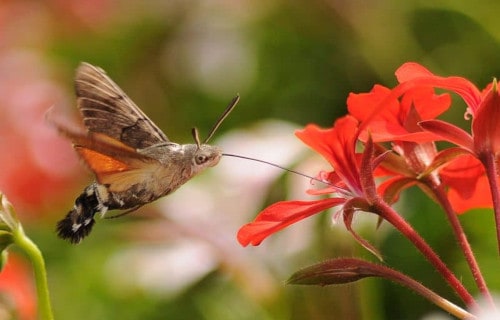
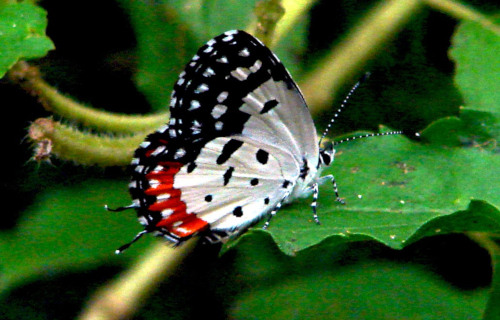
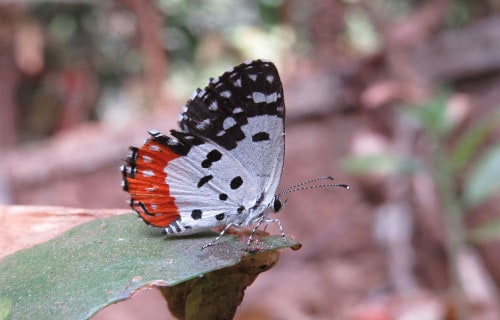
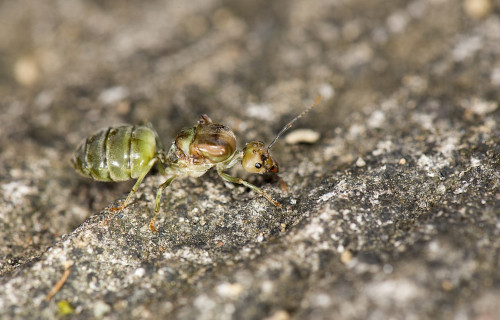
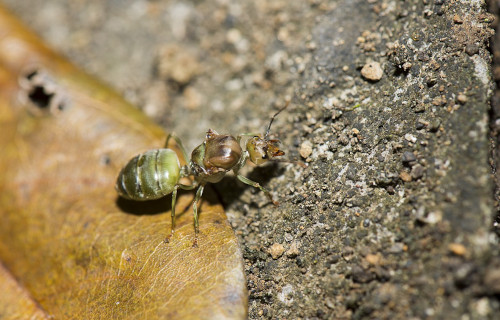
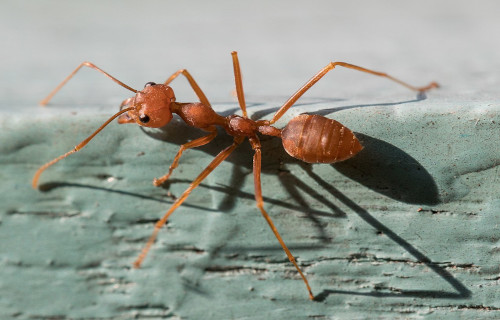
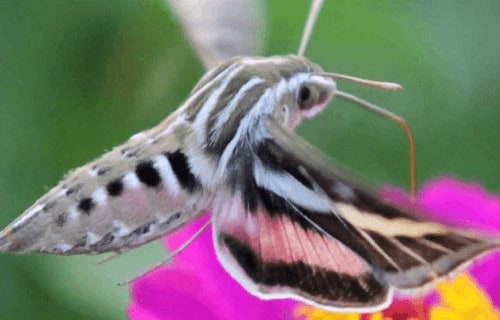
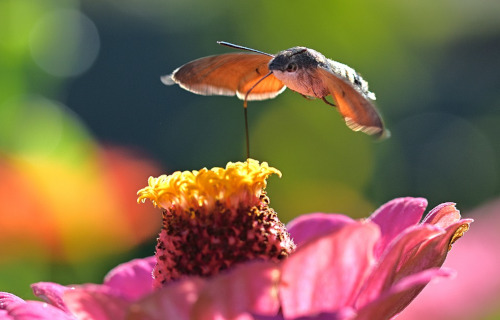
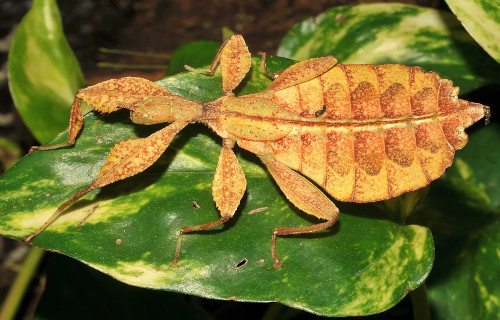
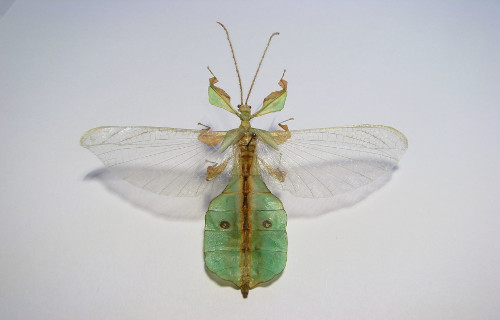
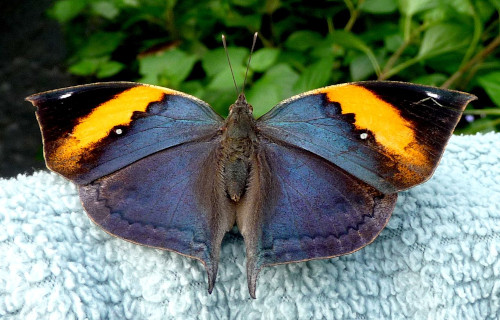
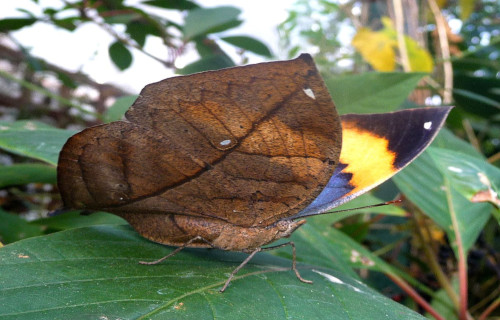
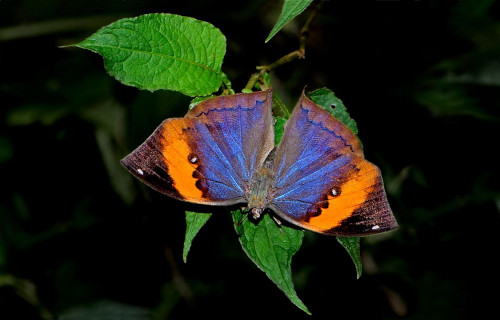









Leave a Reply